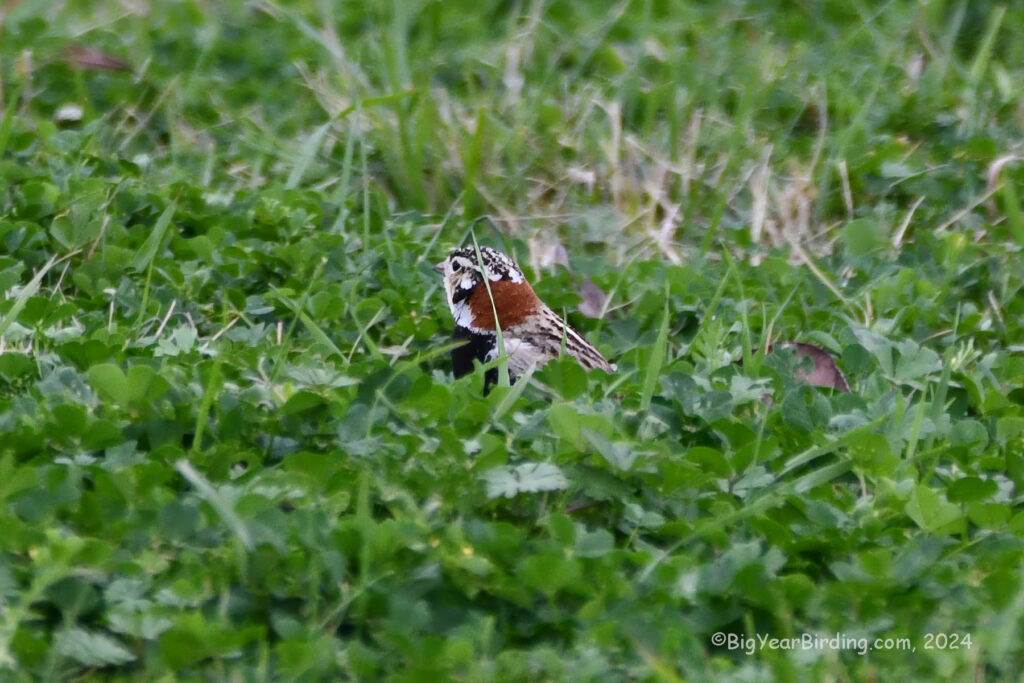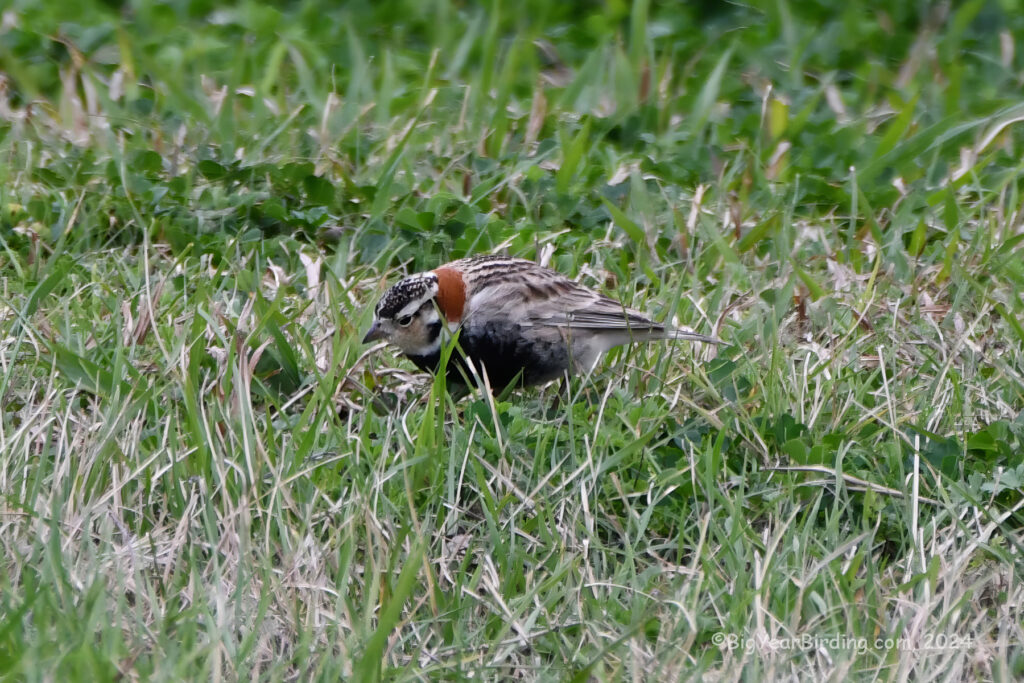
The Chestnut-collared Longspur (Calcarius ornatus) is a striking bird species found primarily in the grasslands of North America. Measuring approximately 5.5 to 6.3 inches in length, with a wingspan ranging from 10.2 to 11.0 inches, this longspur species is known for its compact size and distinctive markings. Weighing in at around 0.8 to 1.1 ounces, the Chestnut-collared Longspur possesses a relatively lightweight frame, well-suited for its grassland habitat and aerial acrobatics.
Distinguishing field marks of the Chestnut-collared Longspur include its rich chestnut-colored collar, which contrasts boldly against its white underparts and grayish-brown upperparts. Males display brighter and more extensive chestnut plumage during the breeding season, while females and juveniles exhibit more subdued markings. In addition to its chestnut collar, this species features a black V-shaped patch on its breast and a distinctive white eyebrow stripe, adding to its unique appearance.

Migration plays a significant role in the life cycle of the Chestnut-collared Longspur. These birds undertake extensive seasonal migrations, traveling from their breeding grounds in the northern Great Plains of the United States and southern Canada to their wintering grounds in the southern United States and northern Mexico. During migration, Chestnut-collared Longspurs can be found in a variety of open habitats, including grasslands, agricultural fields, and prairies, where they forage for seeds and insects to fuel their journey.
Breeding season for Chestnut-collared Longspurs typically begins in late spring to early summer. During this time, males establish and defend territories through elaborate aerial displays and vocalizations, showcasing their chestnut collars to attract females. Nesting occurs on the ground, where females construct cup-shaped nests concealed within dense vegetation, often utilizing grasses and other plant materials. After an incubation period of approximately two weeks, the female will hatch a clutch of eggs, and both parents will participate in feeding and caring for the young until they fledge and become independent.

Despite their adaptability to a variety of open habitats, Chestnut-collared Longspurs face threats from habitat loss and degradation due to agricultural expansion, urban development, and climate change. Conservation efforts focused on preserving and restoring grassland habitats are critical for ensuring the long-term survival of this species. Additionally, continued research on the ecology and behavior of Chestnut-collared Longspurs is essential for implementing effective conservation strategies to safeguard their populations for future generations to appreciate.

